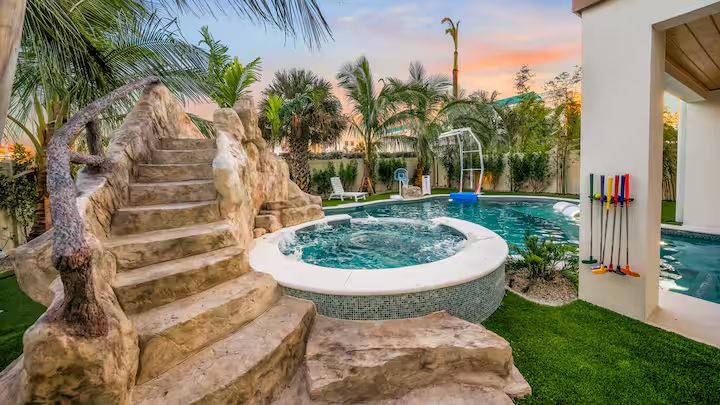What Tenants Often Overlook in Rental Budgets: Hidden Costs That Can Break Your Finances
- Maria V.
- Sep 11
- 8 min read
When searching for a new home, most tenants focus on one number above all: monthly rent. While it’s the biggest piece of the puzzle, it’s far from the only cost involved in renting. Overlooking additional expenses can stretch a budget thin, leading to financial stress just months into a lease. A comprehensive rental budget should go beyond rent and factor in all the hidden and recurring costs of living in a property.

Utilities and Services
When budgeting for rent, many tenants overlook the hidden costs of utilities and services. While rent may seem like the primary expense, electricity, water, gas, and internet often add up significantly—especially when they aren’t included in the lease.
Utility costs can also vary with the seasons. For instance, tenants in regions with harsh winters or sweltering summers may experience higher electricity or gas bills due to heating and cooling needs. Beyond the basics, some properties may require tenants to cover additional expenses like trash collection, sewer fees, or even regular pest control. These extra charges can quickly add hundreds of dollars to monthly housing costs if not planned for in advance.
Being aware of these potential add-ons helps renters set a more realistic budget and avoid unpleasant surprises after moving in. It’s always a good idea to ask landlords upfront which utilities are included and request an estimate of typical monthly costs before signing a lease.

Security Deposits and Upfront Fees
As a real estate analyst, I often see tenants underestimate the financial impact of security deposits and upfront fees when planning their rental budget. While monthly rent is the most visible cost, the initial move-in expenses can be substantial and sometimes overlooked.
Most landlords require a security deposit, typically equal to one month’s rent, as protection against potential damage or unpaid rent. In competitive markets, some landlords may even ask for two months’ rent as a deposit. Beyond that, applicants are often responsible for application fees and background or credit checks, which vary by landlord and jurisdiction.
For pet owners, pet deposits or non-refundable pet fees are another cost to consider. In certain properties, additional upfront charges may include parking permits, amenity access fees, or cleaning deposits. Collectively, these expenses can add hundreds—or even thousands—of dollars before a tenant even moves in.
Failing to account for these costs can strain finances, especially for renters relocating to high-demand markets where landlords have greater leverage to impose higher upfront charges. Tenants should carefully review lease agreements, request a breakdown of all upfront fees, and plan their budget accordingly to avoid unexpected financial stress.

Maintenance Responsibilities
From a real estate analyst’s perspective, one of the most commonly overlooked aspects of renting is the division of maintenance responsibilities. While landlords are generally responsible for major repairs—such as plumbing issues, roof leaks, or appliance breakdowns—tenants are often expected to handle the smaller but recurring upkeep tasks.
For example, renters may need to replace light bulbs, change air filters, unclog drains, or manage lawn care in single-family homes. In multifamily units, tenants may still be required to maintain cleanliness, properly dispose of trash, or manage minor wear and tear. Although each task may seem inexpensive on its own, these costs can accumulate significantly over the course of a lease.
Failing to keep up with basic maintenance can also lead to larger issues that may be charged against a tenant’s security deposit at move-out. For this reason, it’s important for renters to clarify maintenance expectations with their landlord before signing a lease and to budget for these small but recurring expenses.
Over time, the consistent out-of-pocket costs of these responsibilities remind us that renting isn’t just about paying rent—it’s also about managing the ongoing financial obligations of property upkeep.

Insurance Requirements
As a real estate analyst, I often stress the importance of renter’s insurance, a cost many tenants forget to include in their rental budget. While landlords carry insurance to protect the building itself, that coverage rarely extends to tenants’ personal belongings or liability. This means that in the event of fire, theft, water damage, or an accident within the unit, tenants could face significant financial losses without insurance.
In many cases, landlords now require tenants to carry renter’s insurance as a condition of the lease. Premiums are typically affordable—often between $15 and $30 per month—but over a year, this adds up to an additional few hundred dollars. For tenants with pets, landlords may also require pet liability coverage, further increasing insurance costs.
Ignoring this expense not only leaves tenants vulnerable but can also create compliance issues with lease agreements. Smart renters should shop around for policies, compare coverage limits, and factor monthly premiums into their housing budget from the start.
Renter’s insurance is not just a box to check—it’s an important layer of financial protection that ensures stability in the face of unexpected events.

Parking and Transportation Costs
From a real estate analyst’s perspective, parking and transportation costs are another often-overlooked part of renting. Many tenants focus solely on the rent price without considering how much it will cost to park a car or commute from their new home.
In urban areas, parking may come with a steep price tag. Some buildings charge monthly parking fees for garages or reserved spaces, while others may only offer street parking—leading to additional expenses like permits or fines. For tenants with multiple vehicles, these costs can multiply quickly.
Even in suburban or single-family rentals where parking is included, transportation remains a hidden budget item. Longer commutes mean higher fuel costs, more frequent vehicle maintenance, or reliance on public transportation passes. For tenants without cars, the cost of rideshares or metro cards can still add hundreds of dollars to monthly expenses.
Factoring in these costs is crucial because transportation can represent one of the largest household budget items after rent. Choosing a property with convenient, affordable parking or easy access to public transit can help tenants balance lifestyle needs with financial realities.

Furniture and Household Essentials
As a real estate analyst, I often remind tenants that the true cost of moving goes beyond rent, deposits, and utilities. Furniture and household essentials are a major but frequently underestimated expense. Whether moving into a first apartment or upgrading to a larger rental, tenants often find themselves needing to purchase far more than they initially expected.
Items like beds, sofas, and dining tables represent the biggest upfront costs, but smaller essentials quickly add up as well—kitchenware, curtains, rugs, lamps, and cleaning supplies are necessary for comfortable daily living. Even basics such as shower curtains, trash bins, or storage solutions can significantly impact a tenant’s initial budget.
For those relocating long distances, moving costs may be compounded by the decision to replace bulky furniture rather than transport it. Renters who fail to account for these expenditures may feel a sharp financial pinch in the first few months of their lease.
To avoid being caught off guard, tenants should plan ahead by creating a checklist of must-have items and setting aside a dedicated budget for household purchases. Investing strategically in durable, multi-functional pieces can also reduce the need for frequent replacements, helping renters manage long-term costs more effectively.

Rent Increases and Lease Renewals
From a real estate analyst’s perspective, rent increases at lease renewal are one of the most overlooked budget factors tenants face. While renters often plan around the initial lease rate, they may not anticipate how much costs can rise once the contract term ends.
In competitive housing markets, landlords commonly raise rents by 3% to 10% annually, with higher jumps in areas experiencing strong demand and limited supply. Even modest increases can strain a tenant’s budget over time—turning what once felt affordable into a financial burden.
Additionally, lease renewals sometimes come with adjusted fees such as higher parking charges, updated amenity costs, or stricter insurance requirements. Tenants who fail to prepare for these changes may be forced to make difficult decisions: accept the increase, negotiate with their landlord, or face the expense of moving.
To stay ahead, renters should review local rent trends, ask landlords about potential increases before signing a lease, and build a buffer into their monthly budget. Being proactive helps tenants avoid the financial shock of rising housing costs and allows them to make smarter long-term housing decisions.

Moving Costs
As a real estate analyst, I often see tenants underestimate the financial impact of moving costs when planning a new rental. Whether relocating across town or to a different city, the expenses associated with moving can quickly add up and significantly affect the overall rental budget.
Common moving costs include hiring professional movers, renting a moving truck, or purchasing packing supplies such as boxes, tape, and protective materials. For long-distance moves, additional expenses like fuel, tolls, and temporary lodging can further increase costs. Even smaller details—like utility activation fees or deposits for cable and internet—can contribute to the financial burden.
Tenants who do not plan for these expenses often find themselves scrambling to cover unexpected bills, which can lead to unnecessary stress during what should be an exciting transition. To mitigate these costs, renters should obtain quotes from multiple moving services, explore DIY moving options, and create a detailed moving checklist to avoid last-minute expenses.
Accounting for moving costs as part of the initial rental budget ensures a smoother transition and prevents surprises that could strain finances in the first months of occupancy.

Miscellaneous Expenses and Contingency Funds
From a real estate analyst’s perspective, the final piece tenants often overlook in budgeting for a rental is miscellaneous expenses and contingency funds. No matter how carefully you plan, unexpected costs can arise that aren’t covered by rent, utilities, or regular maintenance.
These can include emergency repairs, last-minute furniture replacements, sudden utility spikes, or unexpected fees imposed by landlords. For example, a leaking appliance, broken window, or pest control service might arise during a lease and require immediate out-of-pocket payment. Even minor, irregular expenses like replacing a lost key or paying for temporary storage during transitions can add up over time.
Setting aside a contingency fund—typically 5–10% of your monthly rent or initial move-in costs—provides financial flexibility and peace of mind. This cushion helps tenants handle unexpected expenses without derailing their budget or resorting to credit cards with high interest rates.
Being proactive about miscellaneous costs is not just prudent—it’s essential. Tenants who incorporate a contingency fund into their rental planning are better prepared to handle life’s uncertainties while maintaining financial stability.

Lifestyle Trade-offs
As a real estate analyst, I often observe that tenants underestimate the indirect financial impacts of location when choosing a rental. While a lower monthly rent may seem appealing, it can come with trade-offs that increase overall living expenses and affect quality of life.
For instance, renting in a cheaper neighborhood might mean longer commutes, which translates to higher fuel costs, vehicle maintenance, or public transportation expenses. Similarly, areas with lower rent may have fewer nearby conveniences, such as grocery stores, gyms, or childcare options, forcing tenants to spend more time and money accessing basic services.
Lifestyle trade-offs also extend to amenities and community resources. Properties with lower rent may lack features such as laundry facilities, secure parking, or recreational spaces, compelling tenants to pay for these services elsewhere. Over time, these indirect costs can outweigh any initial savings on rent, making what seemed like a budget-friendly choice significantly more expensive.
When evaluating rental options, it’s essential to consider both direct costs and lifestyle impacts. Factoring in commute time, access to services, and personal convenience ensures a more holistic approach to budgeting and helps tenants make informed decisions that align with both their finances and daily life.
Rent is just the starting point. A realistic rental budget should account for upfront costs, monthly obligations, and lifestyle adjustments. By planning for these often-overlooked expenses, tenants can avoid financial surprises and enjoy their rental home with peace of mind.
Sources:
U.S. Department of Housing and Urban Development (HUD) – Rental Assistance and Utility Costs
National Apartment Association – Understanding Rental Fees and Deposits
U.S. Department of Housing and Urban Development (HUD) – Tenant Rights and Responsibilities
Insurance Information Institute – Renters Insurance Basics
U.S. Bureau of Transportation Statistics – Household Expenditures on Transportation
Federal Trade Commission (FTC) – Budgeting for Your First Apartment
U.S. Bureau of Labor Statistics – Consumer Price Index: Rent of Primary Residence
U.S. Department of Housing and Urban Development (HUD) – Budgeting for Moving Expenses National Multifamily Housing Council – Planning for Unexpected Rental Expenses
Urban Land Institute – The Hidden Costs of Location in Housing Decisions



Comments